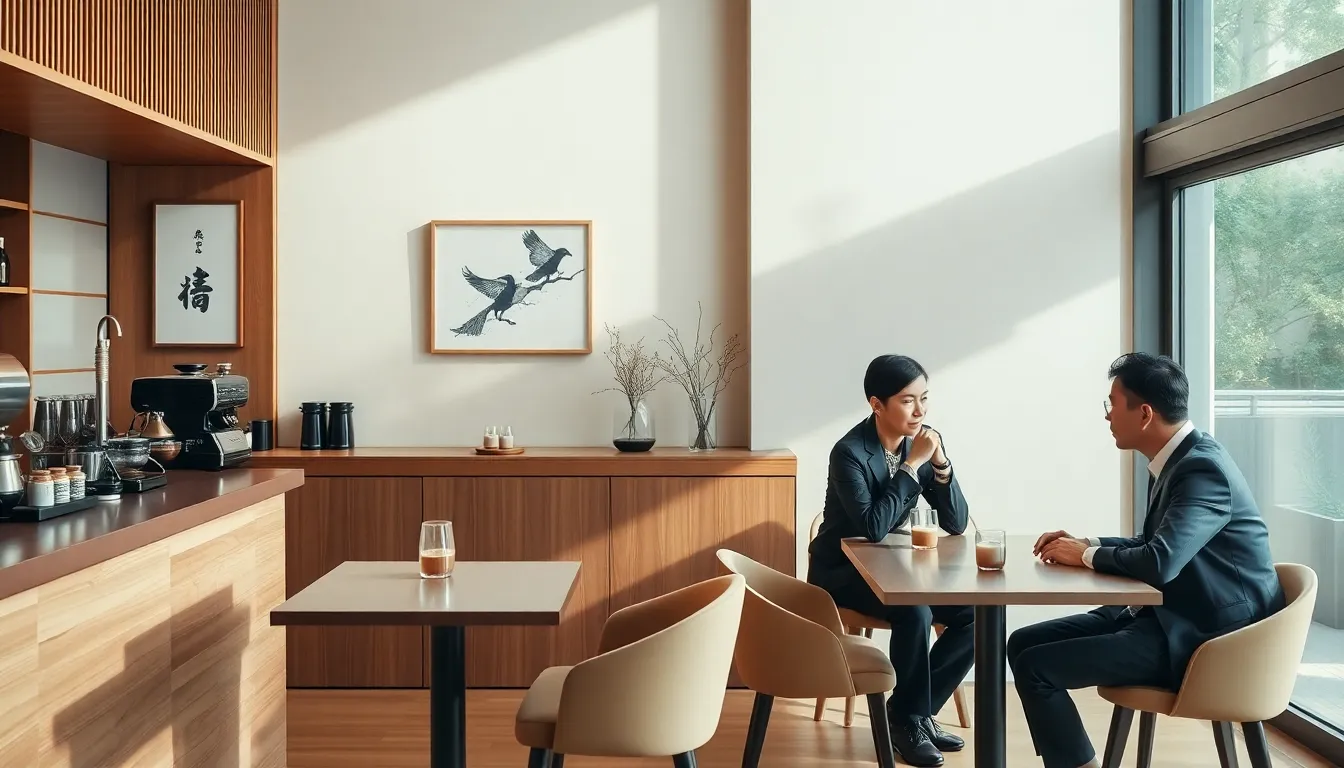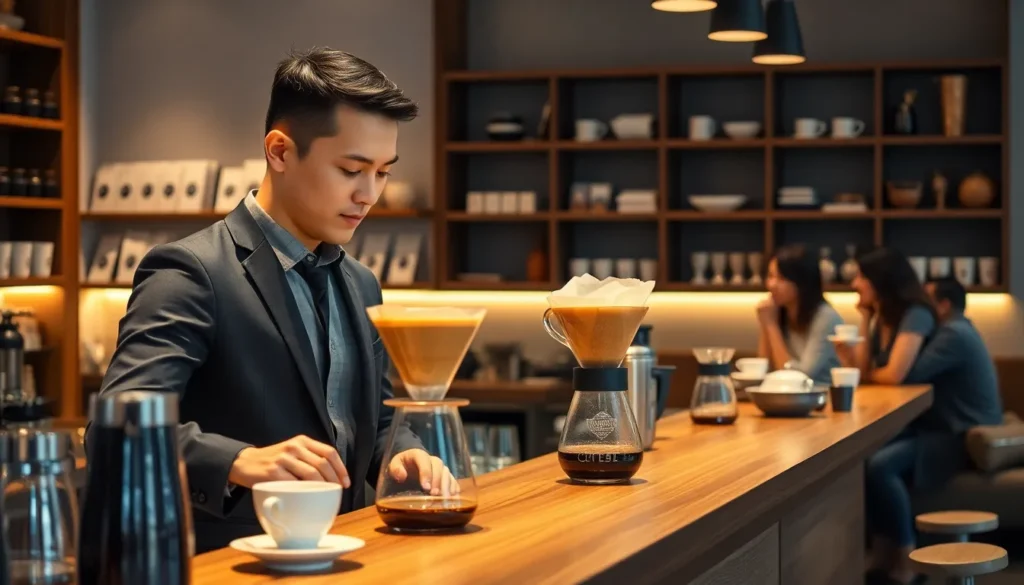Table of Contents
ToggleImagine a country where every cup of coffee tells a story, each sip a unique experience that captures the soul of tradition and innovation. Welcome to the delightful world of Japanese coffee culture. Here, coffee isn’t just a morning pick-me-up: it’s an art form steeped in history and ritual. So grab your favorite mug, and let’s jump into the fascinating blend of flavors and practices that make coffee in Japan a truly special affair.
Historical Background of Coffee in Japan

Coffee made its way to Japan in the 18th century, initially arriving via trade routes. It was around the early 1800s when coffee started gaining traction, primarily among the elite. Japan’s fascination with coffee grew during the late 19th century when the first coffee shop, called ‘Kissaten,’ opened its doors in Yokohama in 1888.
The Kissaten served as more than just a place to enjoy coffee: it became a community hub where people gathered to socialize and discuss ideas. The introduction of instant coffee post-World War II made coffee more accessible, while the traditional brewing methods continued to coexist with modern techniques. This historical backdrop laid the foundation for Japan’s current vibrant coffee culture.
The Evolution of Coffee Shops in Japan
Japanese coffee shops have evolved tremendously, reflecting changes in tastes and lifestyles. The classic Kissaten offers a nostalgic charm, often featuring traditional decor and timeless recipes, serving drip coffee that has stood the test of time.
Fast forward to today, and modern cafes are popping up everywhere, from specialty coffee houses to minimalist designs that focus on the aesthetics of coffee preparation. In these spaces, baristas have become artists, meticulously preparing each cup with precision. The rise of cafe chains and independent coffee shops has created a delightful variety for customers who crave something unique. This evolution showcases not just a shift in taste but also the growing appreciation for coffee as an intricate craft.
Unique Brewing Methods
Japan is renowned for its unique brewing methods that elevate coffee to a form of art. One such technique is the ‘Pour Over’ method, perfected in Japan. In this process, hot water is poured over freshly ground coffee in a slow, circular motion. This technique extracts rich flavors while ensuring each cup is brewed to perfection.
Another popular method is the ‘Siphon’ brewing method, which is as much a visual spectacle as it is a brewing technique. Using a siphon pot, coffee is brewed between two chambers, creating an atmosphere reminiscent of a science lab. There’s also the ‘Japanese Cold Brew,’ which involves brewing coffee with cold water over several hours, resulting in a smooth, rich cup that’s perfect for hot summer days. Each method showcases a commitment to quality and attention to detail, highlighting Japan’s innovative spirit.
Cultural Significance of Coffee in Daily Life
In Japan, coffee has become an integral part of daily life, transcending its role as a mere beverage. For many, it starts the day, fueling busy mornings and long commutes. The ritual of brewing coffee has transformed into a cherished practice, providing solace and a moment to pause in a fast-paced world.
Also, coffee shops serve as safe havens for remote workers, students, and friends. They are spaces where connections are forged over warm cups and laughter shared. The cultural significance of coffee is further emphasized during special occasions, where serving coffee represents hospitality and thoughtfulness. In this way, coffee has woven itself into the fabric of Japanese culture.
Specialty Coffee and Third Wave Movement
The Third Wave coffee movement has taken Japan by storm, emphasizing the appreciation of coffee as an artisanal product. It focuses on sustainable sourcing, transparency, and meticulous brewing techniques. Japanese roasters are committed to the idea of ‘farm to cup,’ nurturing relationships with coffee farmers worldwide to ensure quality and flavor.
Specialty coffee shops are often intimate hubs, providing unique brews that showcase distinct flavor profiles. Customers are increasingly interested in the origins of their coffee beans and the stories behind them. This movement has stimulated a wider cultural appreciation for coffee, encouraging a deeper understanding of types and styles.
Regional Varieties and Preferences
Japan’s diverse geographical landscape contributes to a rich tapestry of regional coffee preferences. For instance, in the northern regions like Hokkaido, coffee lovers often enjoy darker roasts resembling European styles, while in southern regions such as Okinawa, lighter, fruitier coffees are more prevalent.
Saga’s unique blend is also gaining recognition, offering a slight twist on traditional flavors. Each region brings its own flair to coffee culture, influenced by local tastes and weather patterns. So, exploring Japanese coffee culture means savoring the distinctive characteristics that vary from one locale to another, making for an exciting journey through taste.




